- Manufacturer: Tesla
- Designer: Klaus Adolph
- Dimensions: 69 × 109 × 77
- www.teslamotors.com

Index
- Technology The battery pack of the Tesla Roadster electric vehicle is one of the largest and technically most advanced Li-ion battery packs in the world. It is c
- Multi-Fuel Vehicle Electric cars equal freedom. Not simply from oil reliance, but from dependence on any specific power source. Electric power can be generated from natu
- Regenerative Braking In a battery-powered electric vehicle, regenerative braking (also called regen) is the conversion of the vehicle's kinetic energy into chemical energy
- Charging There are 54 million garages for the 247 million registered cars in the US, meaning that the majority of cars are parked overnight in parking structur
- Environment The California electricity generation mix is already extremely clean, but if you really want zero emissions, electric vehicles can be powered from 100
- Incentives The government also wants to find ways to support the ongoing costs of electric cars. 'We are looking at ways we can continue to support [electric car
- Developments According to VentureBeat, there are 30 companies that have been founded to sell electric cars. According to Wikipedia, at least two start-ups are inve
The battery pack of the Tesla Roadster electric vehicle is one of the largest and technically most advanced Li-ion battery packs in the world. It is capable of delivering enough power to accelerate the Tesla Roadster from 0 to 60 mph in about 4 seconds. Meanwhile, the battery stores enough energy for the vehicle to travel more than 200 miles (based on EPA city/highway cycle) without recharging, something no production electric vehicle in history can claim.
Designed to use commodity, 18650 form-factor, Li-ion cells, the Tesla Roadster battery draws on the progress made in Li-ion batteries over the past 15 years. Under the market pull of consumer electronics products, energy and power densities have increased while cost has dropped making Li-ion the choice for an electric vehicle. In the past, to achieve such tremendous range for an electric vehicle it would need to carry more than a thousand kilograms of nickel metal hydride batteries. Physically large and heavy, such a car could never achieve the acceleration and handling performance that the Tesla Roadster has achieved.

Electric cars equal freedom. Not simply from oil reliance, but from dependence on any specific power source. Electric power can be generated from natural gas, coal, solar, wind, hydro, and nuclear sources - or a combination of all of them - without changing the design of the car. No matter how or when the world changes, the car adapts, making it immune from obsolescence.
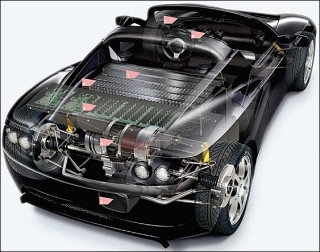
In a battery-powered electric vehicle, regenerative braking (also called regen) is the conversion of the vehicle's kinetic energy into chemical energy stored in the battery, where it can be used later to drive the vehicle. It is braking because it also serves to slow the vehicle. It is regenerative because the energy is recaptured in the battery where it can be used again.
The kinetic energy stored in a moving vehicle is related to the mass and speed of the vehicle by the equation E = ½mv². All else being equal, if your car is twice as heavy it has twice the kinetic energy and if it is moving twice as fast it has four times the kinetic energy. Any time your car slows down the kinetic energy stored in the vehicle has to go somewhere. [...] There is always some kinetic energy consumed by the rolling resistance, mechanical friction, and aerodynamics of your car. These bits of energy go into heating the road, the surrounding air, and various spinning parts in your car. But the vast majority of the kinetic energy is converted into heat by your brake pads when you stomp on the brakes. In the Tesla Roadster, regenerative braking recovers some energy that would otherwise have been wasted in the brakes.
There are 54 million garages for the 247 million registered cars in the US, meaning that the majority of cars are parked overnight in parking structures, parking lots or curbside. As a result, most potential plug-in vehicle consumers do not have an adequate place to charge their vehicles. This problem is even more pronounced in urban areas like San Francisco, where only about 16% of cars are parked in garages overnight and the rest end up curbside or in parking lots. Also, although the US power grid probably has enough overall capacity to supply energy to a nation of plug-in vehicles, it may not have the ability to charge them when they all plug-in and demand energy at the same time - say 6 pm every weekday.
Imagine pulling into any old parking spot downtown, plugging your electric car into a box on the curb, running some errands, and coming back ten minutes later to find your car completely charged and your bank account automatically debited for the balance of your electricity use without you having to swipe any cards. Now imagine you park your plug-in hybrid electric vehicle (PHEV) overnight on the curb outside your apartment after driving all day. You've driven enough that your batteries have stored excess energy from the combustion of a fuel (gas, ethanol, biodiesel, whatever). As soon as you plug that PHEV in, it communicates to the power grid that it has excess energy. As it turns out, the power grid has a need for that extra energy at the moment you plug your car in. In response your car gives some of its stored energy back to the grid. Your account is then credited for the amount of energy you supplied back to the grid.
Later, in the wee hours of the morning when the energy demand is quite low, the grid tells your car (along with a smallish group of other plug-ins) that it can start charging. Ten minutes later, when your group of cars is done charging, another smallish group of plug-ins is told they can begin their charge cycle. And so on and so forth until all the cars that need to be charged are charged.
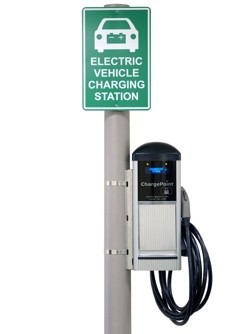
- www.impactlab.com/2008/07/28/smart-grids-fast-charging-infrastructure-for-electric-cars/
- www.uwehub.org/page/2/
Off-peak electricity
There's no doubt that electric cars are coming - now we just have to figure out how to charge them. In Canada's case, we may not have the necessary garage and parking lot plugs yet, but it turns out that we may already have all the energy we need. And here's the best part: much of that power could be virtually free.
Canada currently draws on a huge mix of power sources, including hydro, coal, natural gas and nuclear. The answer to powering millions of electric cars at low cost lies in the fact that while power production is largely consistent, demand is not. In general, we use the most energy on weekday afternoons, during what is called on-peak times, and we must have sufficient power generation to service those times. During off-peak hours, such as at night and on weekends, energy use significantly drops, but the amount generated doesn't. That's because it's not practical to power down nuclear power stations and massive hydroelectric dams at night. Water keeps flowing, coal keeps burning, nuclear reactors keep reacting, and much of that power goes to waste.
Range
Driving in normal conditions (mixed city and highway conditions in a range of temperatures) results in 'real world' range of 244 miles per charge. In fact, in October 2009 the Roadster set an EV record when owner, Simon Hackett, drove his car 313 miles on a single charge during the 10th Annual Global Green Challenge in Australia.
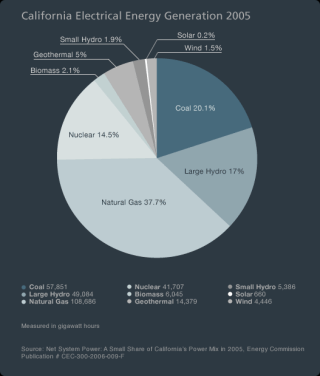
The California electricity generation mix is already extremely clean, but if you really want zero emissions, electric vehicles can be powered from 100 percent renewable energy. You even can generate your own energy to fuel them by installing solar panels that last for decades.
Power Supply
Electricity may be just one answer, but it's an especially desirable one. As the universal currency of energy, it can be generated from coal, solar, wind, hydro, and nuclear sources - or a combination of all of them. No matter how or when the world changes, electricity can adapt, easily and safely.
Power generation plants, even coal burning ones, are inherently more efficient and less polluting than vehicles due to economies of scale and the ability to more efficiently remove pollutants from a smaller number of much larger fixed locations.
Also, an electric car is far more efficient than a gasoline car, so the amount of pollution generated by producing the electricity to drive an EV a given distance is much less than the pollution from the gasoline to drive an internal combustion car the same distance. Whereas a combustion engine car – even those powered by hydrogen, ethanol, and biodiesel – can make use of around 20% of the energy that it consumes, a battery electric car like the Tesla Roadster is able to put more than 80% of the energy it consumes to use in moving the car down the road.
Disposal
The cells in Tesla's battery pack are composed mainly of lithium metal oxides and are manufactured in Japan, a country with very strict environmental laws and where emissions and effluents are strictly controlled and monitored. The cells meet the requirements set forth by the Directive on the Restriction of the Use of Certain Hazardous Substances in Electrical and Electronic Equipment. They do not contain lead, mercury, cadmium, hexavalent chromium, polybrominated biphenyls or polybrominated diphenyl ether. The cells contain no heavy metals. In fact, our entire battery pack, by law, could be disposed in a landfill. [...]
Tesla can recycle about 60% of battery pack materials and reuse a further 10% by weight. We currently plan to landfill only the benign fluff, which comprises about 25% of the pack, but we expect to nearly eliminate this in the future when our volumes get higher and we can justify the effort required to separate and reuse the plastic.
Afterlife
'There are some exciting potential uses for the ESS [Energy Storage System] in its afterlife. [...] For example, the ESS could be used as a power source for off-grid backup or load leveling. The battery requirements for such an application are not as demanding as a high performance vehicle battery. This being said, eventually the batteries will no longer hold a significant charge and will need to be disposed of.'
So the batteries might not go straight from cars to recycling, but when they eventually do, Tesla will be working with Kinsbursky Brothers, Inc.(KBI)/Toxco to:
- maximize the amount of materials that can be reused
- maximize the amount of materials that can be recycled
- minimize energy consumption utilized during the transportation and recycling process
In practice, the cells are sent to a hammer mill that turns them into pulp. They then separate the elements and re-use what can be re-used (cobalt, aluminum, nickel, and copper, etc).
So the battery pack saves thousands of gallons of gasoline/diesel over the life of the vehicle, it is less toxic than the lead-acid batteries that are in regular cars, and at the end of its life it is recycled (which is more than can be said about most things in our society).
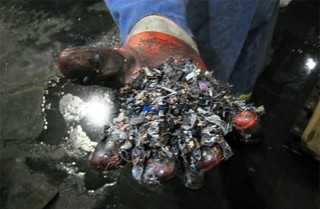
The government also wants to find ways to support the ongoing costs of electric cars. 'We are looking at ways we can continue to support [electric car owners], perhaps, the cost of the batteries - leasing or renting them - there are various options around,' said Hoon. 'It's that part that could incentives consumers to buy an electric vehicle.' John Loughhead, executive director of the UK Energy Research Centre, welcomed the government's move. 'It has developed for itself some high aspirations in the role the UK is going to play ...' he said. 'But the question really is it doesn't tell you exactly how they're going to do it.'
Congestion Charge
Only alternative fuel cars vehicles are exempt from the £8 a day charge. This means London commuters driving in and out of the city centre can save over £1,600 in Congestion Charges.
Vehicle Excise Duty
VED in the UK is based on CO2 emissions. As electric cars have no exhaust, and no emissions, they qualify for FREE road tax. The government has proposed grants from £2,000 to £5,000 towards the purchase of electric cars. More details are expected shortly but it is unlikely these grants will be available until 2011.
According to VentureBeat, there are 30 companies that have been founded to sell electric cars. According to Wikipedia, at least two start-ups are investigating or producing plug-in hybrids. Other entrepreneurs have started companies to make fuel-cell powered and biofuel-powered cars.
And then there is the issue of incumbent firms. The major automakers all have programs in place to come up with vehicles powered by these and other technologies.
The ATNMBL electric vehicle
The ATNMBL is one of the more bizarre electric concept vehicles under consideration although when you find out it is from the team who created the Google G1 phone then perhaps it is something we should take note of. While at first glance this particular vehicle looks bizarre to say the least, when you consider it is a concept vehicle for the market in 2040 then perhaps we can take a more long-term and futuristic approach.
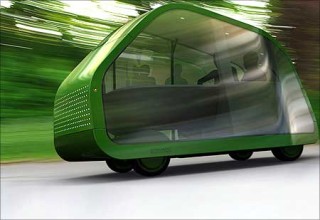
New Models
After years of trying to pretend that they could carry on churning out gas guzzlers (if you doubt that, just watch Chris Paine's excellent 2006 documentary feature 'Who Killed the Electric Car?') the world's automotive manufacturers are now racing to introduce plug-ins.
Daimler and Toyota are to start trials of electric versions of the Smart and Prius, respectively, by the end of this year. The Nissan Leaf will come out next year, as will Chevrolet's Volt. Renault plans to launch the first of a series of plug-ins in 2011, and Toyota has a new model planned for 2012. Mitsubishi has beaten them to it by starting production of the i-MiEV this summer. The indie entrepreneurs who pioneered the market have already hit the roads with plug-ins like the Tesla Roadster Sport in the United States and GoinGreen's G-Wiz in Britain.
McDonald's
While McDonald's, and other prominent fast-food chains around the world, have received significant criticism over the years with regards to various environmental issues, McDonald's is set to open its first outlet next week to contain an electric car charging service. The 'green' McDonald's is set to open in North Carolina and will offer electric car users the chance to recharge their cars via a card subscription system or a one-off toll-free call which will take a fee from the customer. When you consider the number of McDonald's around the world and the need to create readily accessible recharging points for electric cars in the future, perhaps one of the most prominent examples of 'capitalism' in the world could actually play a large part in the green car market in years to come?
Engine Noise
The gentle whirr of electric motors is so quiet that it puts lives in danger because people may not notice the cars approaching until it is too late, according to campaigners. Under new proposals, the European Union is set to follow America's lead in forcing manufacturers to fit the vehicles with a simulator to make the same noise as the throaty revs of a petrol engine.
Prototypes of the simulators, which mimic the sound of a sports car, are already being tested in Britain. Trials are being conducted by Lotus, the sports car maker, in conjunction with Guide Dogs for the Blind. The technology consists of a speaker under the bonnet which is wired to the accelerator pedal, which simulates the revving sound of a petrol engine and becomes louder as the car accelerates. In order to generate the engine sound, recordings of a suitable donor engine were made and analysed to establish the characteristic frequencies at different engine speeds.
Supporters want the devices introduced before the increasing number of electric vehicles cause serious injuries.
A spokesman at The Guide Dogs for the Blind Association said: 'Blind and partially sighted people use the noise of oncoming traffic as a cue for when it is safe to cross a road – if a 'quiet' hybrid electric vehicle is approaching then they will no longer have this cue and are immediately put at risk. We have been working with Lotus since last year on their advanced external sound synthesis technology which we hope will reduce the risks.'































































































